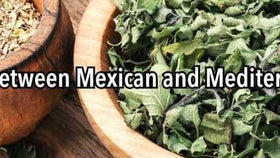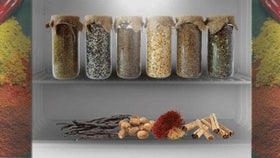The Ultimate Guide to Allspice - The Secret of This Beloved Spice
The Ultimate Guide to Allspice: Flavor, Uses & Substitutes
Allspice, often mistaken for a blend of spices, is a single spice derived from the dried berries of the Pimenta dioica tree. This remarkable spice is celebrated for its unique combination of flavors, which resemble cinnamon, nutmeg, and cloves all rolled into one. The round, dark tan to brown berries offer a unique aromatic twist that makes them a great substitute for other spices or a bold standalone addition to dishes, baked goods, or pickled products.
Whether you're a seasoned chef or an aspiring home cook, understanding how to use allspice can elevate your culinary creativity to new heights. For example, adding allspice to baked sweet potatoes topped with burnt marshmallows is a simple way to incorporate the spice into your cooking. The allspice complements the dish and adds a layer of flavor complexity that tantalizes the taste buds. Allspice is also commonly used in a wide range of American, European, and Caribbean recipes. Traditionally, allspice is used—along with other spices—in ciders, Jamaican jerk seasoning, pies, pickling spice mixes, and meat rubs.
What Is Allspice?
Contrary to its name, allspice is not a mix of different spices. It is the dried, unripe berry of the Pimenta dioica tree, a species native to the Caribbean and Central America. The name "allspice" was coined by English explorers who thought the spice tasted like a blend of cinnamon, nutmeg, and cloves.
This unique spice is available in two forms: whole berries and ground powder. Whole allspice berries are slightly larger than peppercorns—roughly one-third the size of a marble and can be used to infuse flavor into liquids like soups, stews, and brines. Ground allspice, on the other hand, is a finely ground powder made from these berries and is commonly used in baking, dry rubs, and spice blends.
Culinary Uses of Allspice
Allspice is incredibly versatile and can be used in both sweet and savory dishes. Its warm, spicy flavor makes it a popular ingredient in Caribbean cuisine, especially in dishes like Jamaican jerk chicken and spiced rum. In European and Middle Eastern cooking, it is often used in sausages, soups, and stews.
For sweet applications, allspice shines in baked goods like gingerbread, pumpkin pie, and spice cakes. Its ability to enhance the flavors of other spices makes it a staple in autumnal desserts and holiday treats.
How to Use Allspice in Your Cooking
When using allspice, it’s important to consider the form—whole or ground. Whole allspice is ideal for infusing liquids with flavor over time, such as in slow-cooked dishes or brining. Ground allspice, with its more intense flavor, is perfect for baking or adding directly to spice blends and rubs.
Here are some ideas on how to incorporate allspice into your cooking:
Marinades: Add whole allspice berries to your marinade for meats like pork or chicken. The slow release of flavor will infuse the meat with a warm, spicy undertone.
Baking: Use ground allspice in your spice cakes, cookies, and pies. It pairs wonderfully with other warm spices like cinnamon and cloves.
Beverages: Allspice is a great addition to mulled wine or cider. Simply add a few whole berries to the pot while simmering.
Storing Allspice for Maximum Freshness
To maintain the potency of your allspice, store it in an airtight container, away from light and heat. Whole berries will keep their flavor longer than ground allspice, which tends to lose its potency faster due to increased exposure to air. For best results, buy whole berries and grind them as needed. For grinding, a mortar and pestle works great or a spice grinder, and even a hand-held zester can be used to shave some fresh allspice over glazed carrots or other vegetables of your choice.
Why Allspice Deserves a Place in Your Spice Rack
Allspice is more than just a seasoning—it's a powerhouse of flavor that can transform both sweet and savory dishes. By understanding how to use and store this versatile spice, you can bring a new depth of flavor to your cooking.
Whether you're making a classic Caribbean jerk chicken or spicing up your holiday desserts, allspice is the secret ingredient that will elevate your culinary creations. So next time you're looking to add a warm, complex flavor to your dishes, reach for allspice—it just might become your new kitchen staple.
Alternatives to Allspice: Easy Substitutes from Your Pantry
So, you’re mid-recipe and realize you’re out of allspice — now what? Don’t worry! While there’s no perfect substitute for the unique, complex flavor of true allspice (Pimenta dioica), you can still achieve a similar warm, aromatic profile using spices you likely already have in your kitchen.
Allspice Substitute Blend (Per 1 Teaspoon of Allspice):
Mix the following:
½ teaspoon ground cinnamon
¼ teaspoon ground cloves
¼ teaspoon ground nutmeg
This homemade blend mimics the bold, sweet-spicy flavor of ground allspice and works well in both baking recipes and savory dishes like stews, marinades, and spice rubs.
Best Uses for the Substitute:
- Pumpkin pie or spice cakes
- Holiday cookies and gingerbread
- Jerk seasoning and BBQ rubs
- Pickled vegetables and sauces
If your recipe calls for whole allspice berries (as in pickling or brining), there’s no direct substitute, but you can try adding a small pinch of whole cloves and a sliver of cinnamon stick to bring a similar depth. Try using allspice in your next recipe—we promise you’ll thank us.
Looking to buy allspice online? You can find high-quality allspice and other spices for cooking and baking in our online spice shop.







Slofoodgroup
Author